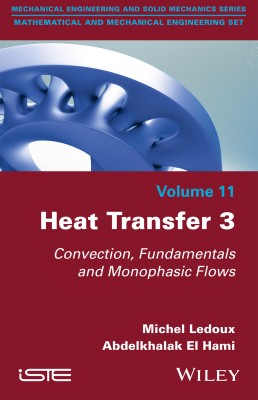
Heat is a branch of thermodynamics that occupies a unique position due to its involvement in the field of practice. Being linked to the management, transport and exchange of energy in thermal form, it impacts all aspects of human life and activity.
Heat transfers are, by nature, classified as conduction, convection (which inserts conduction into fluid mechanics) and radiation. The importance of these three transfer methods has resulted – justifiably – in a separate volume being afforded to each of them, with the subject of convection split into two volumes. This third volume is dedicated to convection, more specifically, the foundations of convective transfers. Various angles are considered to cover this topic, including empirical relationships and analytically approaching boundary layers, including the integral methods and numerical approaches. The problem of heat exchangers is presented, without aiming at being an exhaustive treatise.
Heat Transfer 3 combines a basic approach with a deeper understanding of the discipline and will therefore appeal to a wide audience, from technician to engineer, from doctoral student to teacher-researcher.
1. General Notions.
2. Empirical Approaches.
3. The Boundary Layer.
4. Heat Exchangers.
Michel Ledoux was Professor and Vice-President at the University of Rouen, France. He was also Director of the UMR CNRS CORIA, then Regional Delegate for Research and Technology in Upper Normandy, France. Specializing in fluid mechanics and transfers, he has worked in the fields of reactive boundary layers and spraying. Currently retired, he is an adviser to the Conservatoire National des Arts et Métiers in Normandy, collaborating with the Institute of Industrial Engineering Techniques (ITII) in Vernon, France.
Abdelkhalak El Hami is Full Professor of Universities at INSA-Rouen-Normandie, France. He is the author/co-author of several books and is responsible for several European pedagogical projects. He is a specialist in fluid structure interaction and problems of optimization and reliability in multi physical systems.